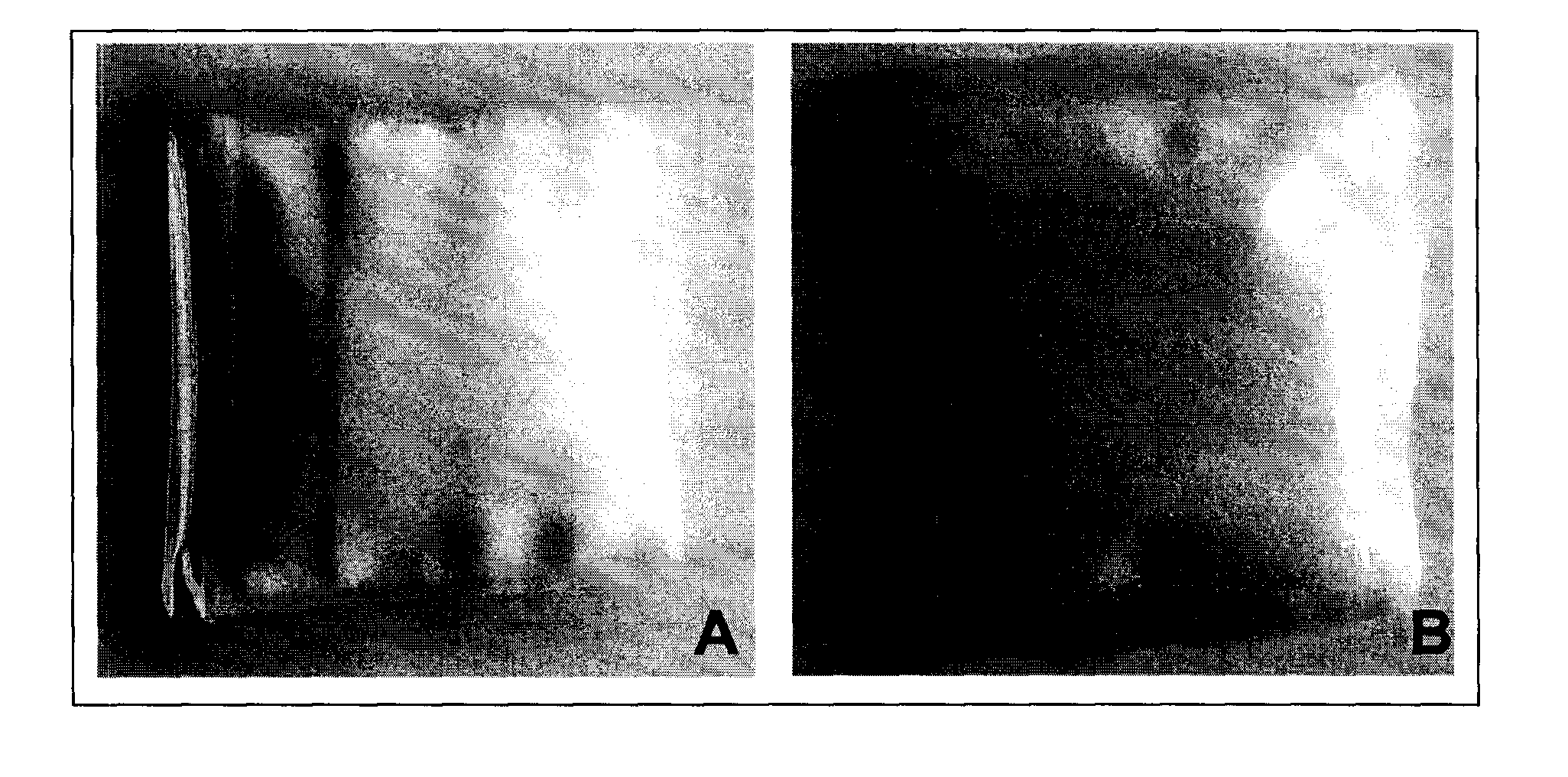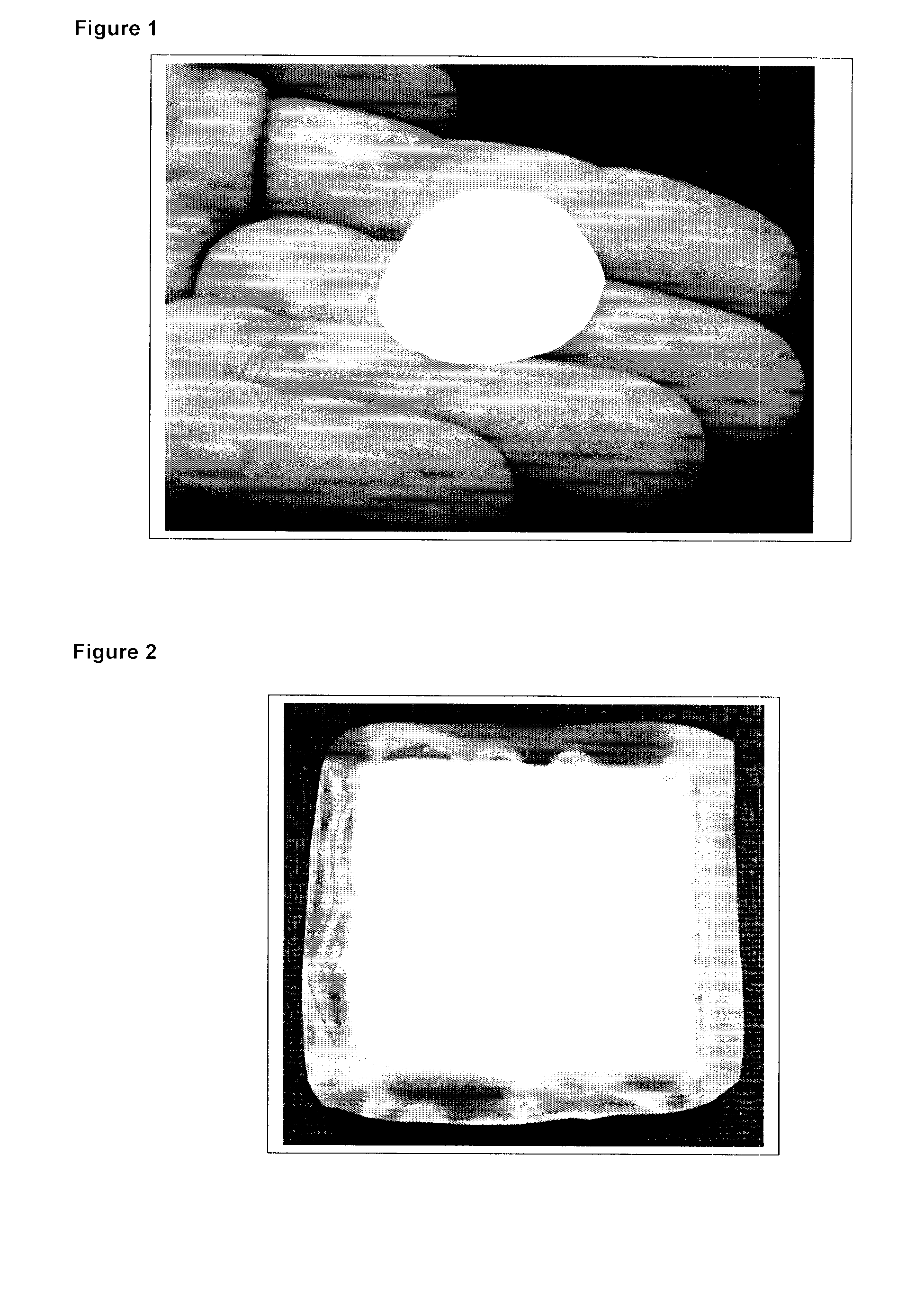Therapeutic Polymeric Pouch
- Summary
- Abstract
- Description
- Claims
- Application Information
AI Technical Summary
Benefits of technology
Problems solved by technology
Method used
Image
Examples
example 1
Formation of Filled Pouches—Chronic Wound Dressings
[0053]A number of pouches containing matrix metalloproteinase (MMP) inhibiting polymeric beads (100-250 μm diameter) were produced for use as a wound dressing useful for non-healing skin wounds (referred to as MI-Sorb™ Dressings). Prototype dressing pouches were produced by both heat sealing and use of an adhesive and both a nylon and polyester mesh (FIG. 1). Final dressing pouch dimensions of approximately 2.5×2.5 cm were selected and 700 mg of dry, polymeric beads were added to the pouch (FIG. 2). The mesh pouches could not be completely filled with dry beads since they swell significantly in moist environments and overfilling may result in rupture during use. The pouch mesh selected was a medical-grade polyamide mesh purchased from SEFAR Filtration Inc. (Buffalo, N.Y.). The mesh (MEDIFAB™, 36 μm (microns) mesh opening) is a precision monofilament fabric that is produced from raw materials that comply with the Code of Federal regu...
example 2
Characterization of Filled Pouches
[0056]MI-Sorb™ dressings fabricated as described in Example 1 were characterized for pouch seam integrity, amount of filled beads, effect of gamma radiation sterilization and effect of storage time using a variety of test methods.
[0057]Pouch seam tear testing was performed on 100 samples of heat sealed MEDIFAB™ mesh using a modified ASTM 180° peel test (ASTM F-88). Briefly, the pouch samples (1 cm wide×5 cm long) were tested on an Instron 8501 Testing Machine using a 100 N load cell and a separation rate of 300 mm / min. The load required to rupture the seam area was recorded to produce an accurate estimate of the average seam strength and an acceptable minimum strength. In addition, the effect of modifying the heating time required to generate a seal and the inclusion of polymer beads in the seam on the seam strength was investigated. In general, the strength of the heat sealed seam was not sensitive to the heating time applied since little differenc...
example 3
Composite Pouch Formation
[0063]In addition to the mesh pouches (shown in FIGS. 1 and 2) that comprise two mesh layers joined together, additional prototype pouches were produced that consist of one porous mesh layer joined to a non-porous polymer film layer (FIG. 7). This pouch consists of the MEDIFAB™ mesh heat sealed to a non-porous polyethylene-polyester composite film containing MMP inhibiting beads. The non-porous layer of this pouch may provide a barrier layer that is necessary in skin wound dressings to provide excessive moisture loss and bacterial infection while the porous mesh layer allows easy fluid transport to the enclosed beads thereby facilitating the therapeutic effect.
PUM
| Property | Measurement | Unit |
|---|---|---|
| Pore size | aaaaa | aaaaa |
| Therapeutic | aaaaa | aaaaa |
| Biocompatibility | aaaaa | aaaaa |
Abstract
Description
Claims
Application Information
 Login to View More
Login to View More - R&D
- Intellectual Property
- Life Sciences
- Materials
- Tech Scout
- Unparalleled Data Quality
- Higher Quality Content
- 60% Fewer Hallucinations
Browse by: Latest US Patents, China's latest patents, Technical Efficacy Thesaurus, Application Domain, Technology Topic, Popular Technical Reports.
© 2025 PatSnap. All rights reserved.Legal|Privacy policy|Modern Slavery Act Transparency Statement|Sitemap|About US| Contact US: help@patsnap.com



